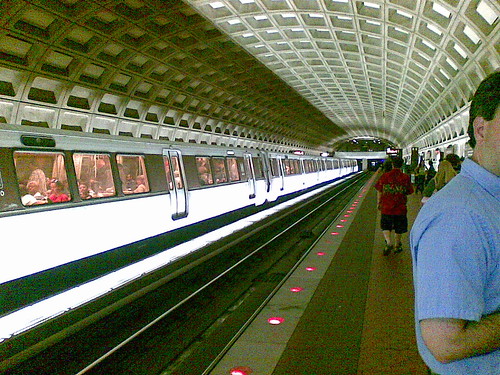Bernie’s Transportation Communications Newsletter – May 18, 2009
Monday, May 18, 2009 – ISSN 1529-1057
Join the International Road Federation (IRF) and learn about the latest international best practices in Pavement Preservation at a newly developed international seminar “Preserving our Highway Infrastructure Assets: Affordable, Safer, and Environmentally Friendly Pavement Preservation Practices”“ August 4-7, 2009 Orlando, Fl. The workshop will focus on key issues such as the role of new materials and technologies for pavement preservation, new funding strategies and contracting models to sustain pavement preservation, and latest pavement management tools.
The seminar’s approach is truly global, due to its cast of international speakers including experts from the World Bank Group, U.S. FHWA, Colas (France), University of Texas El Paso (USA), Nippo Corporation (Japan), FDOT, CECA ARKEMA (France) Rubber Pavements Association (USA), and the Shell (Netherlands). Register Today!
CAMERAS
1) Traffic Camera Ban Fails in Louisiana
Link to story on WAFB-TV:
http://www.wafb.com/Global/story.asp?S=10382118&nav=menu57_2
2) Seventeen Cameras to Monitor Shanghai Taxi Drivers
Link to story in the Shanghai Daily:
http://www.shanghaidaily.com/sp/article/2009/200905/20090516/article_401016.htm
GPS / NAVIGATION
3) GPS Upgrade Behind Schedule and Over Budget
Link to CNET News story:
http://news.cnet.com/8301-13639_3-10243477-42.html
ROADWAYS
4) Rest Stop Hellos Get a Goodbye from South Dakota
Nonprofit groups no longer can host events at interstate rest stops after officials with the state DOT decided they are too much hassle.
Link to story in the Argus Leader:
http://www.argusleader.com/article/20090518/NEWS/905180330
5) Experimental Safety Sign Going Up on Wisconsin Highway
Link to story from KUWS Radio:
http://www.businessnorth.com/kuws.asp?RID=2936
6) Technology Could Stop Speeding and Crashes
Link to story in The Sunday Times:
http://technology.timesonline.co.uk/tol/news/tech_and_web/article6294866.ece
SAFETY / SECURITY
7) TSA Improves Program to Check Airline Passengers Against Terrorist List
Link to story on Nextgov:
http://www.nextgov.com/nextgov/ng_20090518_1856.php
8) Tennessee Enacts Texting-Behind-the-Wheel Law
Link to story in The Tennessean:
9) Indiana Teens Ready to Mute the Ban on Driving with Cell Phones
Link to story in The Indianapolis Star:
TRAVELER INFORMATION / TRANSPORTATION MANAGEMENT
10) Former Dash Executive Raised $3 Million for Driver-Centric iPhone App
Link to story in GPS Business News:
http://www.gpsbusinessnews.com/Former-Dash-exec-raised-$3M-for-driver-centric-iPhone-App_a1523.html
News Releases
1) Automakers Strive to Add Content Without Clutter
Upcoming Events
Mid-Continent Transportation Symposium 2009 – August 20-21 – Ames, Iowa
http://www.intrans.iastate.edu/events/midcon2009/index.htm
Today in Transportation History
1969 **40th anniversary** – Apollo 10 was launched.
http://nssdc.gsfc.nasa.gov/planetary/lunar/apollo10info.html
=============================================================================================
The Transportation Communications Newsletter is published electronically Monday through Friday.
To subscribe send an e-mail to: TCNL-subscribe@googlegroups.com
To unsubscribe send an e-mail to: TCNL-unsubscribe@googlegroups.com
TCN archives: http://groups.yahoo.com/group/transport-communications
Questions, comments about the TCN? Please write the editor, Bernie Wagenblast at i95berniew@aol.com.
© 2009 Bernie Wagenblast











